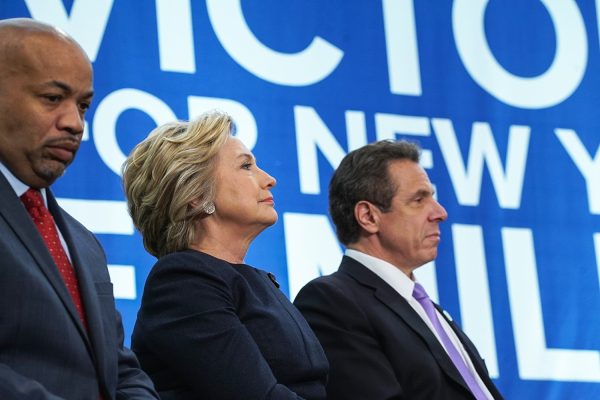
You’ll read many stories this week about Hillary Clinton’s post-convention “bounce” in the polls and Donald Trump’s own, disastrous post-convention period. From feuding with the parents of a fallen Muslim American soldier to appeasing Russia’s Vladimir Putin, the Republican president candidate has certainly done himself no favors in recent days.
But Clinton’s poll numbers are less of an upswing than a recovery from a small dip in July.
Trend
Look at the trend: Neither Pollster, from The Huffington Post, nor Polltracker, by Talking Point Memo, has ever had Trump ahead. Ever!
The RealClearPolitics average of national polls briefly put Trump in the lead last month, right after the Republican National Convention. But that was the first time it suggested the businessman could beat Clinton.
The trend in all three aggregates, going back to the summer of last year, is unmistakable: Clinton dominates this race.
FiveThirtyEight‘s forecast confirms that she has a 78-percent chance of winning the election in November.
State by state
Projections that look at the Electoral College rather than the national vote produce similar results.
Seldom has the winner of the popular vote failed to prevail in the Electoral College, the 2000 contest between George W. Bush and Al Gore being the only exception in living memory.
If anything, a state-by-state assessment is even worse for Trump. States that Mitt Romney thought he might win four years ago, such as Colorado, Pennsylvania and Virginia, are leaning very much Clinton’s way while some Republican bastions, in particular Arizona and Georgia, can now be considered battlegrounds.
Vilifying the nation’s fastest-growing demographic (Hispanics) will do that for a candidate.
Trump’s only hope is winning more votes from working-class whites in Rust Belt states like Michigan, Ohio and Wisconsin to make up for his losses in the Sun Belt.
It doesn’t look like that’s going to happen.
Balancing act
The reason, as Amy Walter has explained in The Cook Political Report, is that for every action there is a reaction: mobilize more low-income whites with a nativist platform and you encourage more high-income and ethnic minority voters to turn out for the other side.
“A campaign is a balancing act,” Walter argues. “Lean too far one way and you fall off.”
Instead, the winning campaign is the one that can motivate and energize its base without alienating that 41 percent of Americans who describe themselves as “moderate” or encouraging the other side to turn out in even bigger numbers.
Trump is clearly failing that test. No wonder the Republican Party is panicking.
